-
 Bitcoin
Bitcoin $107,352.1067
0.28% -
 Ethereum
Ethereum $2,429.3531
-0.90% -
 Tether USDt
Tether USDt $1.0001
-0.02% -
 XRP
XRP $2.1894
4.62% -
 BNB
BNB $646.7968
0.36% -
 Solana
Solana $147.4290
4.03% -
 USDC
USDC $0.9998
-0.02% -
 TRON
TRON $0.2756
1.52% -
 Dogecoin
Dogecoin $0.1630
1.14% -
 Cardano
Cardano $0.5612
1.18% -
 Hyperliquid
Hyperliquid $37.0580
-0.05% -
 Bitcoin Cash
Bitcoin Cash $496.9410
-0.09% -
 Sui
Sui $2.7318
3.19% -
 Chainlink
Chainlink $13.1503
0.58% -
 UNUS SED LEO
UNUS SED LEO $9.0766
0.55% -
 Avalanche
Avalanche $17.7220
1.46% -
 Stellar
Stellar $0.2380
1.52% -
 Toncoin
Toncoin $2.8439
0.38% -
 Shiba Inu
Shiba Inu $0.0...01143
1.84% -
 Litecoin
Litecoin $85.8053
1.47% -
 Hedera
Hedera $0.1483
2.70% -
 Monero
Monero $314.3240
2.12% -
 Bitget Token
Bitget Token $4.6725
0.77% -
 Dai
Dai $1.0000
0.00% -
 Polkadot
Polkadot $3.3555
1.28% -
 Ethena USDe
Ethena USDe $1.0001
0.02% -
 Uniswap
Uniswap $7.0890
2.64% -
 Pi
Pi $0.5355
-3.40% -
 Pepe
Pepe $0.0...09393
1.06% -
 Aave
Aave $256.8136
-1.90%
How to set the grid interval of Bybit contract? Best practice sharing
Optimize your Bybit grid interval based on market volatility and trading goals to enhance profitability and manage risk effectively.
May 11, 2025 at 09:28 am
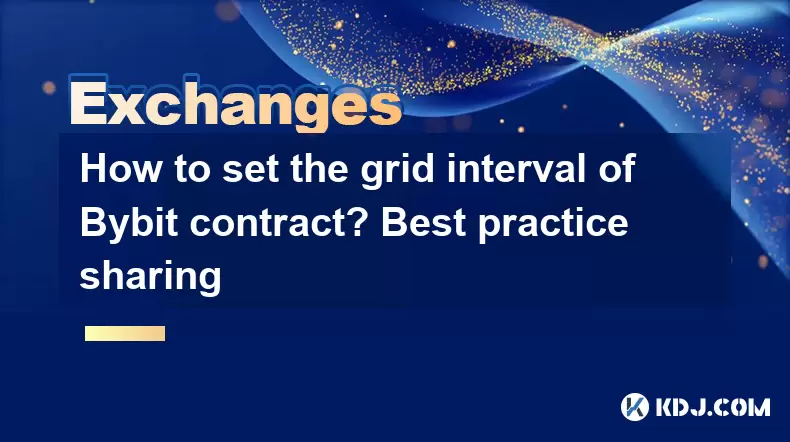
Setting the grid interval of Bybit contracts is a crucial aspect of trading that can significantly influence your trading strategy and outcomes. The grid interval refers to the price levels at which you set your buy and sell orders in a grid trading strategy. By optimizing this interval, traders can potentially enhance their profitability and manage risk more effectively. In this article, we will explore the steps to set the grid interval on Bybit and share best practices to help you make the most of your trading experience.
Understanding Grid Trading on Bybit
Before diving into the specifics of setting the grid interval, it's essential to understand what grid trading entails. Grid trading is an algorithmic trading strategy that involves placing buy and sell orders at regular intervals within a specified price range. This strategy aims to profit from market volatility by buying low and selling high within the grid.
On Bybit, grid trading is facilitated through the Bybit Grid Bot, a tool designed to automate this strategy. The grid interval is one of the key parameters you need to set when configuring the bot. It determines how closely spaced your buy and sell orders will be, which can affect your potential profits and the frequency of your trades.
Steps to Set the Grid Interval on Bybit
Setting the grid interval on Bybit involves a few straightforward steps. Here's how you can do it:
- Log into your Bybit account: Ensure you are logged into your Bybit account and navigate to the trading section.
- Access the Grid Bot: Click on the "Grid Bot" option in the trading menu. This will open the grid trading interface.
- Select the Trading Pair: Choose the cryptocurrency pair you want to trade. Bybit supports various pairs, so select the one that aligns with your trading strategy.
- Set the Grid Parameters: In the grid settings, you will see an option to set the grid interval. This is usually measured in percentage terms or in the asset's price.
- Enter the Grid Interval: Input the desired grid interval. For example, if you want to set a 1% grid interval, you would enter "1" in the designated field.
- Review and Confirm: Double-check all your settings, including the grid interval, and confirm to start the grid trading bot.
Best Practices for Setting the Grid Interval
Setting the grid interval effectively requires a deep understanding of market conditions and your trading goals. Here are some best practices to consider:
Aligning Grid Interval with Market Volatility
Market volatility is a critical factor when setting your grid interval. In highly volatile markets, a wider grid interval can help capture larger price movements, potentially increasing your profits. Conversely, in less volatile markets, a narrower grid interval might be more suitable as it allows for more frequent trades and smaller profit margins.
To determine the appropriate grid interval based on market volatility, you can:
- Analyze historical price data: Look at the historical volatility of the trading pair to gauge what might be expected in the future.
- Use volatility indicators: Tools like the Average True Range (ATR) can provide insights into current market volatility, helping you set a grid interval that aligns with market conditions.
Considering Trading Goals and Risk Tolerance
Your trading goals and risk tolerance should also guide your choice of grid interval. If your goal is to generate steady, smaller profits with minimal risk, a narrower grid interval might be preferable. On the other hand, if you're aiming for larger profits and are willing to accept higher risk, a wider grid interval could be more appropriate.
To align your grid interval with your trading goals and risk tolerance:
- Define your risk-reward ratio: Determine how much risk you are willing to take for potential rewards. This can help you decide on the appropriate grid interval.
- Backtest different intervals: Use Bybit's backtesting feature to test different grid intervals and see how they perform under various market conditions.
Optimizing Grid Interval for Different Assets
Different cryptocurrencies exhibit varying levels of volatility and liquidity, which should influence your choice of grid interval. Bitcoin, for instance, might require a different grid interval compared to a more volatile altcoin like Ethereum.
To optimize your grid interval for different assets:
- Research asset-specific volatility: Understand the typical volatility patterns of the assets you are trading.
- Adjust intervals based on liquidity: More liquid assets can handle narrower grid intervals, while less liquid assets might require wider intervals to avoid slippage.
Monitoring and Adjusting the Grid Interval
Once you have set your grid interval, it's important to monitor its performance and make adjustments as needed. Market conditions can change rapidly, and what works today might not be as effective tomorrow.
To effectively monitor and adjust your grid interval:
- Regularly review performance: Use Bybit's trading analytics to track the performance of your grid trading strategy.
- Be ready to adjust: If you notice that your grid interval is not capturing the desired price movements, consider adjusting it. This might mean widening or narrowing the interval based on current market conditions.
Common Mistakes to Avoid
When setting the grid interval, there are several common mistakes that traders should avoid:
- Setting intervals too narrow: This can lead to excessive trading fees and may not capture significant price movements.
- Setting intervals too wide: This can result in missed opportunities and larger drawdowns if the market moves against your position.
- Ignoring market conditions: Failing to adjust the grid interval based on changing market volatility can lead to suboptimal performance.
Frequently Asked Questions
Q: Can I change the grid interval after starting the grid bot on Bybit?
A: Yes, you can adjust the grid interval after starting the grid bot. However, you will need to stop the bot, make the necessary changes, and then restart it. Keep in mind that changing the grid interval mid-trade can affect your current positions and potential profits.
Q: How does the grid interval affect my trading fees on Bybit?
A: The grid interval can impact your trading fees because it determines the frequency of your trades. A narrower grid interval will result in more frequent trades, potentially increasing your trading fees. Conversely, a wider grid interval will lead to fewer trades and lower fees, but it might also mean missing out on smaller price movements.
Q: Is there a recommended grid interval for beginners on Bybit?
A: There is no one-size-fits-all recommendation for grid intervals, as it depends on market conditions and individual trading goals. However, beginners might start with a moderate grid interval, such as 0.5% to 1%, and adjust based on their experience and the performance of their trades.
Q: Can I use the same grid interval for different trading pairs on Bybit?
A: It's generally not advisable to use the same grid interval for different trading pairs due to varying levels of volatility and liquidity. Each asset should be evaluated individually, and the grid interval should be set accordingly to optimize performance.
Disclaimer:info@kdj.com
The information provided is not trading advice. kdj.com does not assume any responsibility for any investments made based on the information provided in this article. Cryptocurrencies are highly volatile and it is highly recommended that you invest with caution after thorough research!
If you believe that the content used on this website infringes your copyright, please contact us immediately (info@kdj.com) and we will delete it promptly.
- Ripple, CEO, and the XRP ETF Buzz: What's Next?
- 2025-06-29 00:30:13
- Ripple (XRP) and Crypto Analysis: Navigating Trends and Insights
- 2025-06-29 00:30:13
- Aave Price Bull Rally: Can AAVE Defend Its Critical Support Zone?
- 2025-06-29 00:50:12
- BlockDAG, Avalanche, Airdrop: Shaking Up the Crypto Scene with Innovative Strategies
- 2025-06-29 00:50:12
- Ethereum to $10,000? Crypto Analysts Weigh In on ETH's Ambitious ATH
- 2025-06-29 00:35:12
- Zilliqa 2.0: EVM Support and Protocol Overhaul Usher in a New Era
- 2025-06-29 01:10:13
Related knowledge
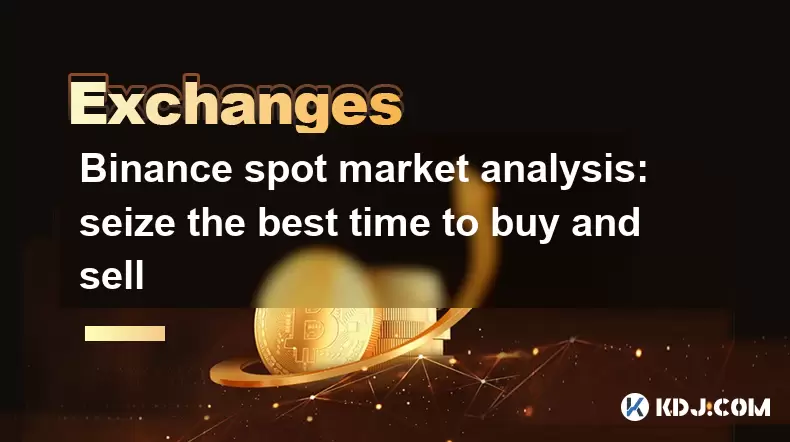
Binance spot market analysis: seize the best time to buy and sell
Jun 19,2025 at 04:56pm
Understanding the Binance Spot MarketThe Binance spot market is one of the most popular platforms for cryptocurrency trading globally. It allows users to trade digital assets at current market prices, making it essential for traders aiming to buy low and sell high. Unlike futures or margin trading, spot trading involves direct ownership of the asset aft...
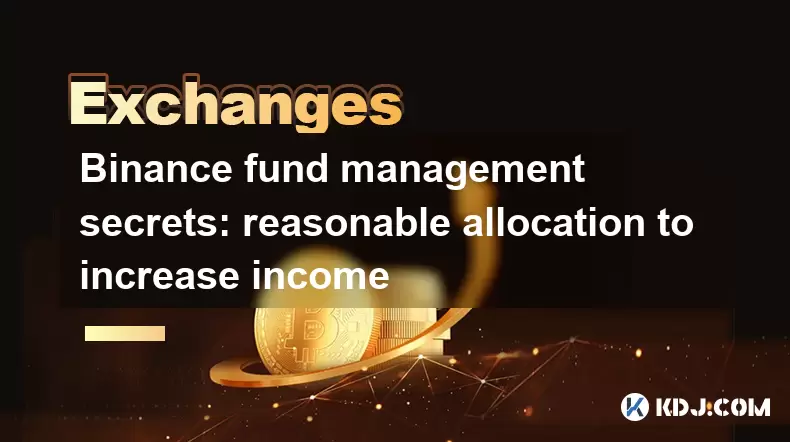
Binance fund management secrets: reasonable allocation to increase income
Jun 22,2025 at 02:29pm
Understanding Binance Fund ManagementBinance fund management involves strategic allocation of your cryptocurrency assets to optimize returns while managing risk. The key to successful fund management lies in understanding how different investment options on the Binance platform can be utilized to create a diversified portfolio. This includes spot tradin...
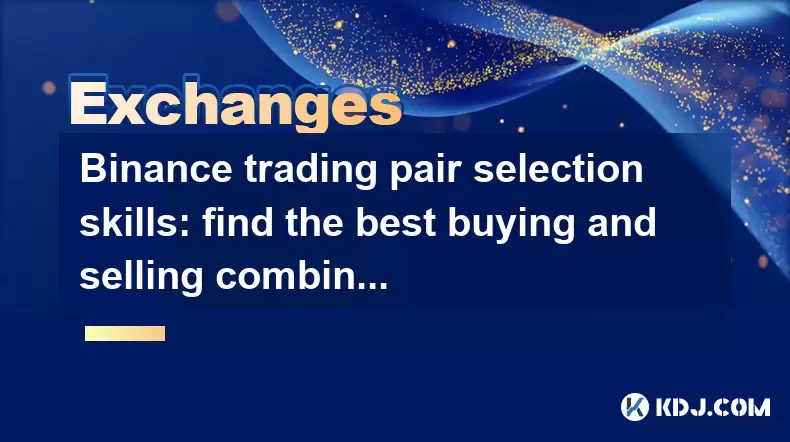
Binance trading pair selection skills: find the best buying and selling combination
Jun 23,2025 at 02:49am
Understanding the Basics of Trading Pairs on BinanceBefore diving into trading pair selection skills, it's essential to understand what a trading pair is. On Binance, a trading pair refers to two cryptocurrencies that can be traded against each other. For example, BTC/USDT means Bitcoin is being traded against Tether. Each trading pair has its own liqui...
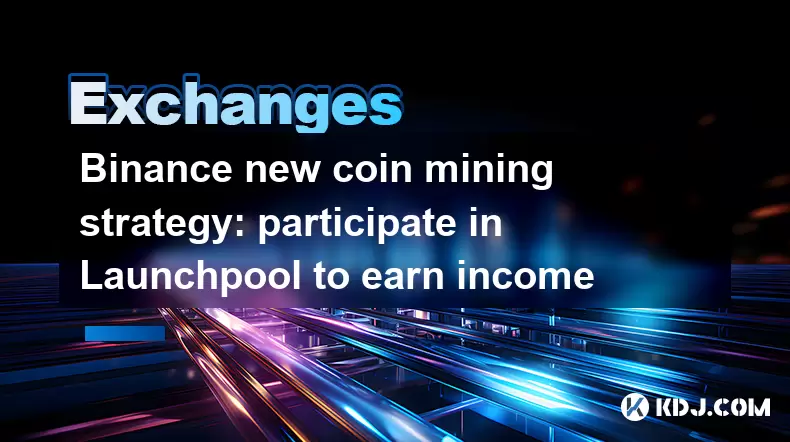
Binance new coin mining strategy: participate in Launchpool to earn income
Jun 23,2025 at 11:56am
What is Binance Launchpool and how does it work?Binance Launchpool is a feature introduced by the world’s largest cryptocurrency exchange, Binance, to allow users to earn new tokens through staking. This platform enables users to stake their existing cryptocurrencies (such as BNB, BUSD, or other supported assets) in exchange for newly launched tokens. T...
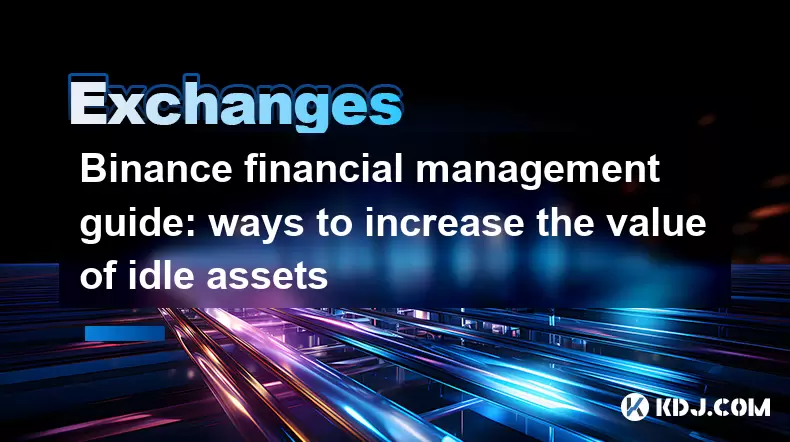
Binance financial management guide: ways to increase the value of idle assets
Jun 19,2025 at 11:22pm
Understanding Idle Assets in the Cryptocurrency SpaceIn the fast-paced world of cryptocurrency, idle assets refer to digital currencies that are not actively being used for trading, staking, or yield farming. Holding these funds in a wallet without utilizing them means missing out on potential growth opportunities. Binance, as one of the leading platfor...
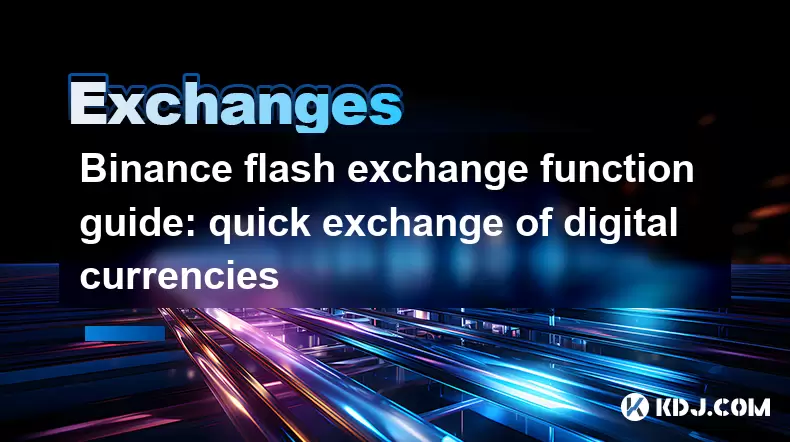
Binance flash exchange function guide: quick exchange of digital currencies
Jun 23,2025 at 12:29pm
What is the Binance Flash Exchange Function?The Binance Flash Exchange function is a powerful tool designed to allow users to instantly swap between supported cryptocurrencies without the need for placing traditional buy/sell orders. This feature simplifies the trading process by offering a direct exchange mechanism, eliminating the requirement to conve...

Binance spot market analysis: seize the best time to buy and sell
Jun 19,2025 at 04:56pm
Understanding the Binance Spot MarketThe Binance spot market is one of the most popular platforms for cryptocurrency trading globally. It allows users to trade digital assets at current market prices, making it essential for traders aiming to buy low and sell high. Unlike futures or margin trading, spot trading involves direct ownership of the asset aft...

Binance fund management secrets: reasonable allocation to increase income
Jun 22,2025 at 02:29pm
Understanding Binance Fund ManagementBinance fund management involves strategic allocation of your cryptocurrency assets to optimize returns while managing risk. The key to successful fund management lies in understanding how different investment options on the Binance platform can be utilized to create a diversified portfolio. This includes spot tradin...

Binance trading pair selection skills: find the best buying and selling combination
Jun 23,2025 at 02:49am
Understanding the Basics of Trading Pairs on BinanceBefore diving into trading pair selection skills, it's essential to understand what a trading pair is. On Binance, a trading pair refers to two cryptocurrencies that can be traded against each other. For example, BTC/USDT means Bitcoin is being traded against Tether. Each trading pair has its own liqui...

Binance new coin mining strategy: participate in Launchpool to earn income
Jun 23,2025 at 11:56am
What is Binance Launchpool and how does it work?Binance Launchpool is a feature introduced by the world’s largest cryptocurrency exchange, Binance, to allow users to earn new tokens through staking. This platform enables users to stake their existing cryptocurrencies (such as BNB, BUSD, or other supported assets) in exchange for newly launched tokens. T...

Binance financial management guide: ways to increase the value of idle assets
Jun 19,2025 at 11:22pm
Understanding Idle Assets in the Cryptocurrency SpaceIn the fast-paced world of cryptocurrency, idle assets refer to digital currencies that are not actively being used for trading, staking, or yield farming. Holding these funds in a wallet without utilizing them means missing out on potential growth opportunities. Binance, as one of the leading platfor...

Binance flash exchange function guide: quick exchange of digital currencies
Jun 23,2025 at 12:29pm
What is the Binance Flash Exchange Function?The Binance Flash Exchange function is a powerful tool designed to allow users to instantly swap between supported cryptocurrencies without the need for placing traditional buy/sell orders. This feature simplifies the trading process by offering a direct exchange mechanism, eliminating the requirement to conve...
See all articles
























































































